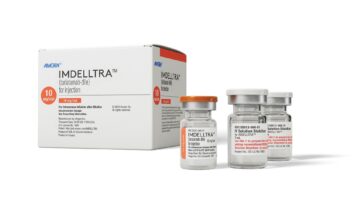The model these days for the relationship between sales representatives and health care providers puts hospitals at a disadvantage. Sales reps have a considerable amount of influence on product utilization. Thus, hospitals tend to not trust them, creating an adversarial relationship during negotiations and contracting for physician preference items.
Insourcing sales reps, however, benefits health systems by aligning the service and distribution functions of the supply chain with the end users so hospitals can partner directly with manufacturers. Direct partnerships eliminate issues like pricing gamesmanship, adversarial negotiation tactics, overstocking inventory, and invoice discrepancies, to name a few. By allowing health care providers to increase efficiency while cutting costs, insourced sales reps align the three key stakeholders (physicians, sales reps, and hospital supply chain) so providers don’t make choices based on third-party sales reps’ suggestions while not knowing possible financial impacts on respective hospitals.
Manufacturers benefit as well. Manufacturers gain business when physicians become loyal to the products they provide. By securing long-term contracts with hospitals that have their own internal sales forces, manufacturers can have their sales teams focus on growing new accounts. Bringing this process in-house stabilizes the sales rep-provider relationship. This benefits the manufacturer while also helping hospitals negotiate lower price points in exchange for product loyalty.

With the Rise of AI, What IP Disputes in Healthcare Are Likely to Emerge?
Munck Wilson Mandala Partner Greg Howison shared his perspective on some of the legal ramifications around AI, IP, connected devices and the data they generate, in response to emailed questions.
In what other ways do insourced sales reps benefit health systems?
Health Care Provider Leverage
From a health system perspective, the more you vertically align the supply chain, the more influence you have when negotiating prices. Leverage is all about control, and when a sales rep can’t influence physicians with add-on services or products because the hospital controls those aspects of the supply chain, health care providers win.
Inventory Efficiency
Once you handle service and distribution, you can also manage inventory more efficiently. Keeping your operational data in-house helps you better predict the amount of products you will need, rather than manage what’s available while struggling with third-party supply data from sales reps. Managing the inventory yourself allows the health system to focus on other projects that add mutual value, such as implementing electronic data interchange with the implant manufacturer.
Physician-Hospital Alignment
Sales reps upsell new technology, and physicians want to try the latest and greatest technology. However, the newest gadget isn’t always the best choice for the patient. Sales reps work on commission, whereas in-house reps work only for optimal patient outcomes. An insourced service team can work alongside the physician to ensure the appropriate technology is utilized, which will ensure the optimal outcome for each procedure and patient.
Operating Room Support
Great relationships between physicians and in-house sales reps make a major difference in the operating room. Many times, hospitals do not have the resources to build dedicated and specialized OR teams around physicians, so sales reps step in to recommend products and tools. Replacing those third-party reps with in-house reps allows for consistency in every procedure.
Understanding the benefits of insourced sales reps is one thing; switching to a new model built around having insourced sales reps is another thing altogether. The process won’t happen overnight, but taking the right first steps can set a health care system on the path to a more efficient, cost-effective model:
- Evaluate internally.
Learn how to set up your new model that utilizes insourced sales reps by first analyzing financial, operational, and clinical data associated with the procedures you plan on impacting. Understand where the value lies in the supply chain, and clearly define your objective and goals with this new model. (Reducing price should not be the only goal.)
- Engage and align physicians.
Once you have the objective and goals of your new model defined, you must work to structure alignment with the physicians who are impacted and remember that an employed physician is not necessarily an engaged physician. The discussion for alignment and what works for your health system (and for the physicians) should be transparent. Change can’t all come from the top down. You must engage and involve your physicians for your plan to succeed. Change is often greeted with skepticism and doubt, so introduce the changes as a transfer of knowledge in-house, and discuss hiring existing market sales representatives to build the internal team. Establish your position and get everyone on board to build something efficient and innovative.
- Make niche technology accessible.
When designing your business model, use data to determine what percentage of utilized procedures and products are considered niche. What you should find is that the Pareto Principle applies to implant utilization: Eighty percent of the procedures and products are considered standard, and 20 percent are considered niche. Share the data with the physicians to show that the majority of products used are standard, and build out whatever percentage of standardization makes the most sense for your health system. This will allow physicians to shift between providing general and niche services to patients, as needed, under the new model.
Big improvements require big changes, and in the medical field, insourcing sales reps is as big as they come. By switching to in-house reps, hospitals have opportunities to regain their negotiating power and keep more of their decisions in-house. Evaluate your organization, and see how changing the model could improve your process.














